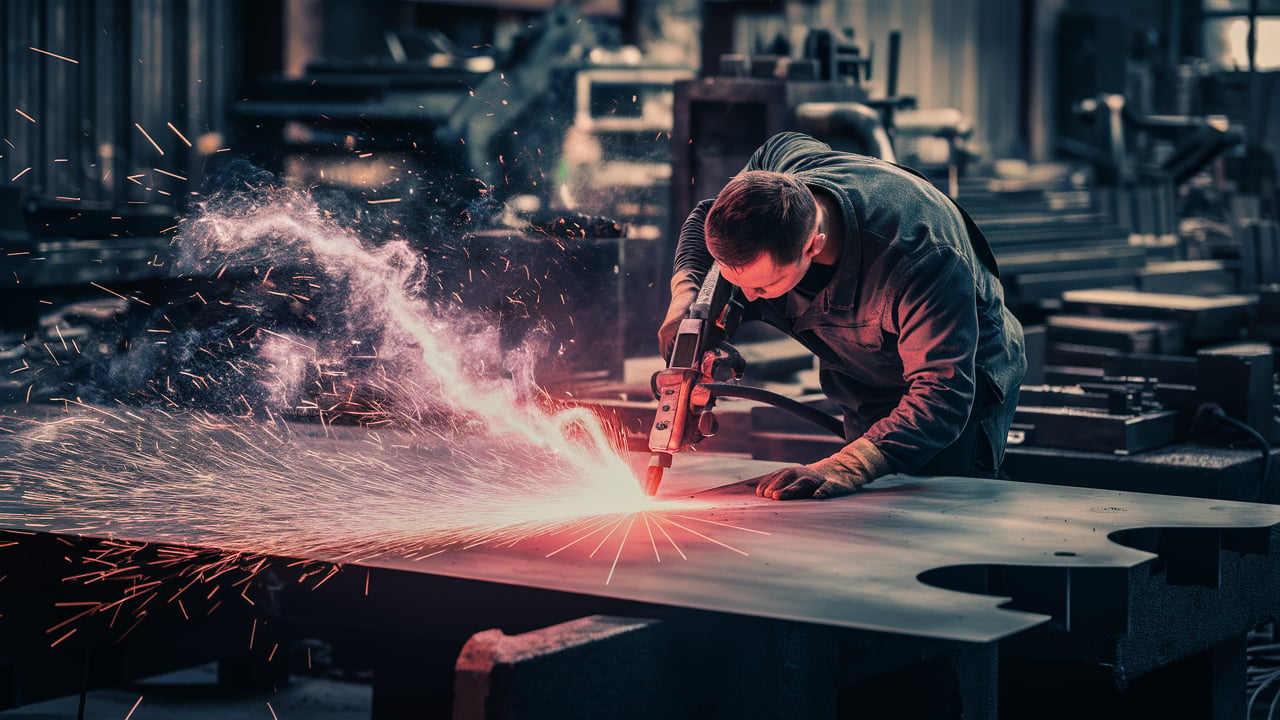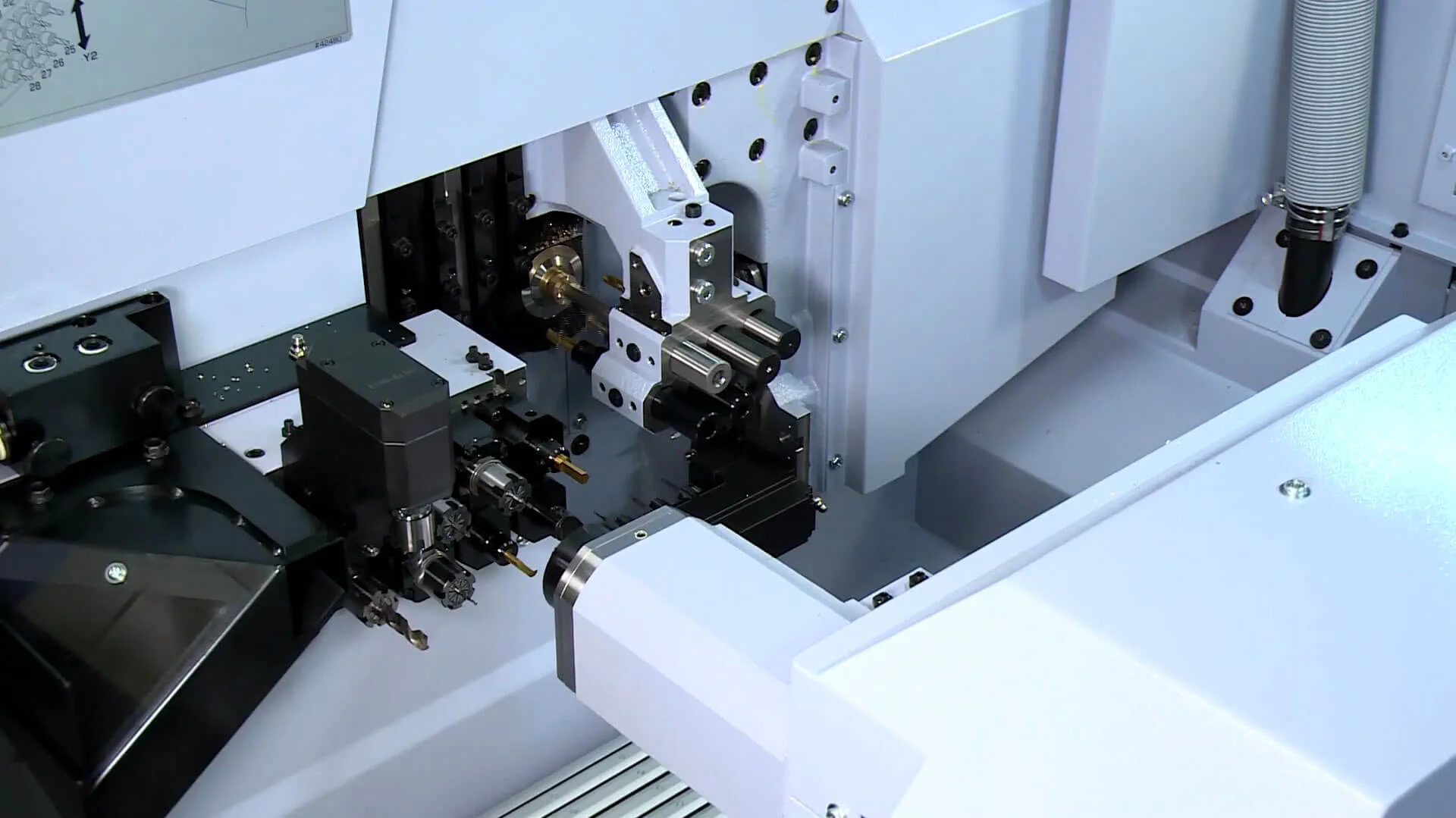Plasma cutting has changed the metal fabrication industry a lot because it can make very accurate and detailed cuts in materials that conduct electricity. This way of cutting using heat is special for being fast, efficient, and flexible. Because of this, many industries like car making or aeroplane building prefer to use plasma cutting techniques. By making high-temperature plasma, this method can melt metals and help create complicated shapes, curves, and circles easily. In this article, we will look into how plasma cutting works in detail.
What is plasma cutting?
Plasma cutting, a type of thermal cutting process, is used to make 2-dimensional profiles from a workpiece that can conduct electricity. It works well for creating complicated cuts and parts, particularly useful when forming curves and circles. The method uses high-temperature plasma to melt the conductible workpiece where there’s an application of a drive system which moves the torch made from plasma in two dimensions such as the X and Y coordinate system.
How does plasma cutting work?
Electrically conductive gas
The process begins by directing an electrically conductible gas, like compressed air or nitrogen, through a tiny nozzle to form a plasma arc of elevated temperature.
Ionization and high temperatures
Through electricity, the gas gets ionized and turns into plasma. The temperature can go up to 30,000 degrees Fahrenheit (16,649 degrees Celsius), which is very hot enough to melt metal.
Material cutting
The metal gets heated to such a high degree by the plasma, and the fast-moving gas blows away its melted substance. This process brings about clean and accurate cuts.
Cutting speed and quality
The cutter’s speed, gas flow rate and power output are key factors that influence the cutting speed and quality. Therefore, plasma cutters prove to be efficient and effective for cutting metal.
Types of plasma cutters
The types of plasma cutters depend on how they are arranged, the gas used and also the cooling technique. These are the main kinds of plasma cutters:
Conventional plasma cutting
Normal plasma cutting is a usual technique, giving good value and effective cutting for different materials. It sees broad use in numerous sectors because it’s versatile and inexpensive.
High-definition plasma cutting
High-definition plasma cutting, known as a modern method, can provide more precision and cleaner cuts than the traditional technique. This is because it leaves less distortion on the cut surface which is often required in industries where accuracy matters a lot. It makes intricate designs possible along with high-quality finishes.
Dual gas plasma cutting
Dual gas plasma cutting is a method that involves using plasma gas along with another gas shield to narrow down the plasma arc. This technique resembles water injection plasma cutting because it requires a secondary gas to blow out the melted slag during the process, decreasing requirements for after-cutting work.
Mechanized plasma cutting
Mechanized plasma cutting refers to the process where computer numerical control (CNC) systems are used to guide the plasma torch on its cutting path. This method provides precise and repeatable movements, making it suitable for large-scale industrial uses.
Manual plasma cutting
Manual plasma cutting, as its name implies, needs an operator to guide the plasma torch by hand. This method is more adaptable and fitting for minor jobs or those less intricate.
The main components of a plasma cutter
In a plasma cutter, you will find many parts that cooperate to make accurate cuts. These components can be classified depending on whether the plasma cutter is manual or mechanized.
Components of a manual plasma cutter
Power supply
The supply of power changes the alternating current (AC) coming from line voltage into direct current (DC) voltage, which is crucial to form the plasma arc.
Plasma torch
The torch is responsible for holding and managing the plasma arc. We employ it as our key instrument to guide the plasma towards the workpiece.
Gas supply
The gas supply gives the gas which gets ionized to generate plasma. Common gases are compressed air, nitrogen and argon.
Electrode
The electrode takes energy from the power source and gives it to the plasma gas, helping with ionization. This part is very important for creating a high-temperature plasma arc.
Consumables
Items that are consumed in the cutting process are known as consumables. They consist of nozzles, electrodes and shields. These parts wear out over time and must be replaced often for efficient and high-quality cutting operations.
Components of a mechanized plasma cutter
CNC controller
The CNC controller, which is a computer-based system, directs the plasma torch to move along the cutting path. It can follow programmed designs and patterns with high accuracy.
Z-axis control
Z-axis control is responsible for adjusting the height of the torch while cutting, maintaining the best cutting conditions and uniform quality of cuts.
Cooling system
The cooling system stops parts from becoming too hot, which is crucial for keeping up the working power and life of the plasma cutter.
Max material thickness
There is a limit to how thick the material can be for plasma cutters to cut it. This limit changes based on the strength and kind of plasma cutter being utilized.
Additional features of mechanized plasma cutters
Mechanized plasma cutters frequently have extra characteristics to enhance their performance and ease of use. These can encompass:
Torch height control
Automatic torch height control, or ATHC short, maintains a fixed distance between the torch and the workpiece by modifying the height of the torch while cutting. It is vital for keeping uniform cut quality and preventing harm to both the cutting tool and the workpiece.
Piercing capabilities
Mechanized plasma cutters can make holes or begin a cut in the middle of the workpiece with precision, even if it is very thick.
Conclusion
Plasma cutting, a flexible and effective way of thermal cutting, creates 2-dimensional profiles from conductible materials. The process uses high heat from plasma to melt through the material. A drive system helps guide the torch made of plasma that traces out required shapes. Different kinds of cutters and tools are used in this Fabrication and welding method which include those for conventional cuttings and high-definition ones along with dual gas as well as mechanized cuts.
Knowing the major parts of manual and mechanized plasma cutters is crucial in selecting the correct equipment and getting the best results for cutting. Whether it’s detailed patterns or large-scale production, plasma cutting provides a trusted method to meet a range of metal cutting requirements.



